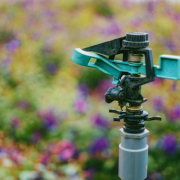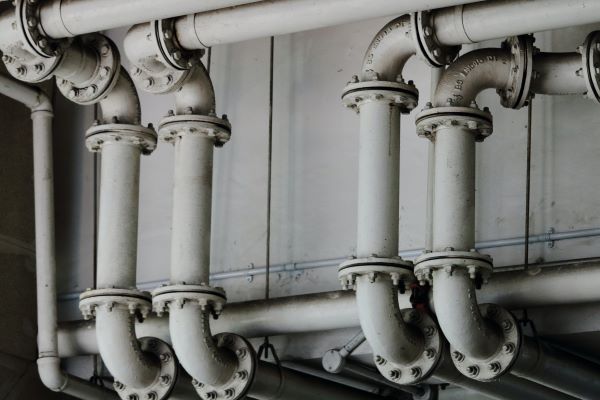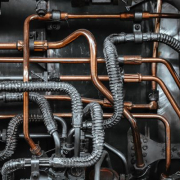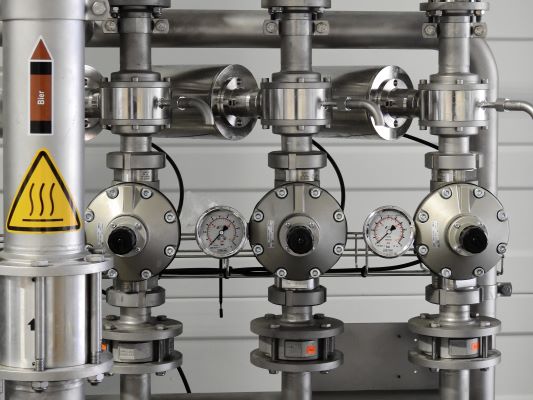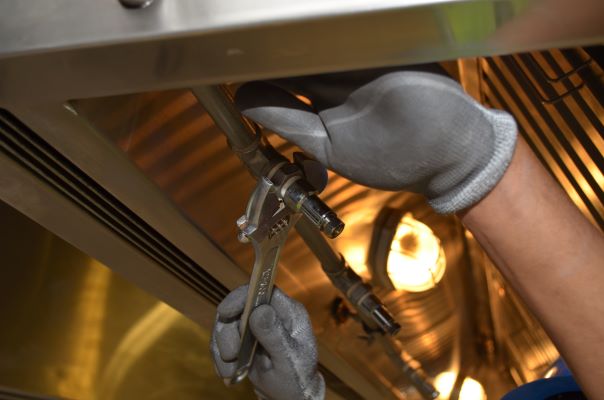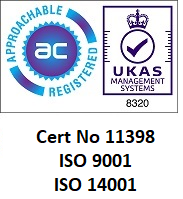5 Ways Solenoid Valves are Used
Solenoid valves are key parts of many systems in which the flow of material needs to be controlled remotely. This type of valve opens and closes in response to an electrical charge, so they are perfect for machinery and systems operated by control panels, or in automated systems. In this article, we will describe a few examples of solenoid valve uses, and the types of SV best suited to the application.
To name a few examples, solenoid valves are used in:
- Automated Irrigation/Sprinkler systems
- Air Compressor systems
- Electric Showers
- Drinks Dispensers
- Automatic Door Locking systems
In each of these systems, an electrical signal controls the valve, allowing simple, immediate and accurate control, and enabling programmable systems.
What is a Solenoid Valve?
A solenoid valve is an electromagnetically-operated gate used to control the flow of gasses and liquids in pressurised systems. The valve can be either “normally open” or “normally closed” and is moved from its normal position when the solenoid receives an electrical current. A solenoid is a coil of copper wire around a rod (or core, or plunger) of ferrous (iron-containing) metal. When electrical energy passes through the coil, it creates a magnetic field, moving the rod. When this happens, the rod opens or closes the valve, starting or stopping the flow of the medium (substances) through the system.
Working Principles: Direct Acting vs Pilot Operated Valves
There are two main types of solenoid valves: directly or pilot operated. In a direct-acting solenoid valve, the core or rod is the part which blocks the opening, sealing the valve. It is the simplest working principle and adequate for many systems.
Pilot-operated valves, on the other hand, are quite complex. They are also known as indirect-acting valves and rely on the pressure differential between the inlet and outlet ports. The rod of a pilot-operated valve moves when the coil is electrified and causes a rubber membrane or ‘diaphragm’ to open the orifice. To do this, there must be a minimum pressure differential of approximately 0.5 bar. between the inlet and outlet ports.
The diaphragm has a small opening, allowing the medium (water, gas, etc.) to flow from the inlet port into the upper compartment, where the diaphragm is supported by a spring.
The rod in the solenoid acts upon a pilot hole, a narrow opening which connects the upper compartment to the low-pressure port.
In the closed position, the rod closes this pilot hole, but in the open position, a small amount of the medium can flow through, causing the pressure above the diaphragm to drop.
This allows the spring to contract, lifting the diaphragm away from the main opening. The medium can then flow freely from the inlet port to the outlet port.
The engineers at Instrumentation Academy have made an informative video explaining with diagrams and simple terms how pilot-operated solenoid valves work.
Different Solenoid Valve Applications
There are many systems in which solenoid valves are applied. These valves can be two-way, three-way or more, and specially adapted for use with gas, water, liquid chemicals or for general purpose use. Here we’ll discuss some different systems that use solenoid valves.
Automated Irrigation & Sprinkler Systems
Controlling water flow through sprinkler systems can be achieved with normally-closed solenoid valves. When irrigation is triggered, an electrical charge causes the ferromagnetic core to move, opening the valve and allowing water to pass through the system.
This works because the system is pressurised. When the valve opens, the water flows through at a high rate and is expelled through small holes in the sprinkler head, creating the familiar shower effect over a wide area.
Depending on the size of the area to be irrigated, consider whether 2-way or 3-way valves are the best option. A 3-way valve will enable multiple sprinklers to have one point of control, making these perfect for large areas such as sports pitches, parks and arable fields. It is also important to have a high flow-rate valve for this application.
Air Compressor systems
Air compressors use air-tight solenoid valves to control air pressure within the circuit. When the compressor is running, the electric motor drives the compressor, drawing in filtered air. The air is compressed, refrigerated and stored in the tank. During this phase, the solenoid is powered, closing the circuit to prevent air from escaping. When there is enough compressed air in the tank, a pressure switch stops the motor. To avoid over-pressurising the system, the power stops and the solenoid valve opens, allowing excess air to escape.
It’s important to use high-pressure solenoid valves for compressors as they have stronger seals to withstand the build-up of pressure required. The 21A-PW series can support pressures up to 15 bar.
Shower Systems
Similar to the sprinkler system, An electric shower system uses a solenoid valve to control the flow of water. When the shower turns on, the electric current enters the coil of the solenoid, pulling the valve open immediately and releasing the flow of water through the shower system.
A 2-way, normally closed, direct-acting water solenoid valve is suitable for use in shower systems, as long as materials can work well with hot water. The 21A solenoid valve series is suitable for use with showers, and other systems using pressurised and heated water.
Drinks Dispensers
The office coffee machine, the water dispenser and the car wash all operate using vending solenoid valves in a very specific configuration, controlled by programmed timers. For a basic cup of coffee, a metred amount of hot water from the heater tank is released via the first solenoid valve into an internal container. Ingredients such as coffee and milk powder are dispensed by similar valves into the same container, where they are mixed with the water before being released into the dispenser head. A final valve dispenses the finished product into a cup, and you walk away with a cup of coffee.
All of the solenoid valves in an automated coffee machine are normally closed, water-resistant and made from high-grade materials to withstand the heat of the hot water and prevent contamination.
Vending Solenoid Valves, such as those in the JM series and 21A series, are designed for vending hot water in applications such as this.
Dentists’ Chairs
It may surprise you to know that the automated hydraulic function which raises and lowers some dentists’ chairs is controlled using solenoid valves. Most dentists’ offices are equipped with a fully-integrated system, enabling the chair height to be adjusted from the same control panel as the dental equipment.
A hydraulic chair is lifted by the thrust of a hydraulic cylinder, providing a smoother movement than mechanical systems. The hydraulic system works by pumping oil from a basin into the circuit and pressurising it to 12-13 bar. When a button is pressed, the solenoid valve works to divert the oil from the pump into the cylinder, which is pushed up by the force of pressurised fluid, lifting the chair to the required height. A second button sends an electrical current to a second solenoid valve which opens to exhaust the pressurised oil from the cylinder, pulling the chair back down.
High-pressure solenoid valves are perfect for a hydraulic system such as this, as it requires a valve that can cope with the viscous medium and high pressure, such as the 4731 series.
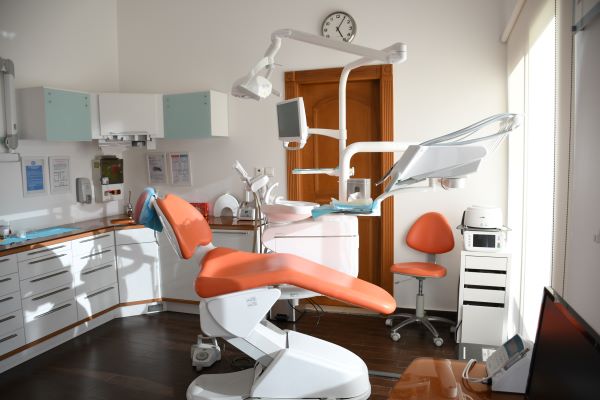
All types of Solenoid Valves Available from Avalco
There are solenoid valves in many systems in industry, medicine, agriculture and in the home. We hope that this article has given an overview of the wide range of applications solenoid valves have, and the differences in how certain valves are more suited to each application. Whether you’re looking for 2 or 3-way valves or something that can cope with harsh chemicals, heat or high pressure, you’ll find it in our solenoid valve online shop. Avalco Ltd is a supplier of almost every range of solenoid valves, for air, water, fuel and more. We operate throughout the UK for all types of industry. On our website, you can find the exact spec for each valve we supply, or you can speak to a solenoid valve expert for more friendly advice.

